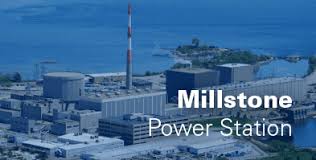Democratic Governor Dannel Malloy on Dec. 28 announced the selection of two nuclear plants — Dominion Energy Inc.’s Millstone Power Station in Connecticut and NextEra Energy Inc.’s Seabrook Nuclear Power Station in New Hampshire — along with nine solar projects and one offshore wind project in the state’s solicitation for zero-carbon electricity. The procurements totaling nearly 12 million megawatt hours represent 45 percent of the state’s electricity load.
The Millstone selection follows the findings by the Department of Energy and Environmental Protection and the Public Utilities Regulatory Authority that the 2,100-megawatt units are at risk of early retirement based on Dominion’s financial statements and inadequate revenues from “an increasingly gas-dominated market.” Connecticut passed a law last year allowing the state’s only nuclear power plant to compete for long-term contracts with other zero-carbon resources such as wind, solar and hydropower. The department selected a 10-year bid for about 50 percent of Millstone’s output, reflecting the energy-only price for the first three years, and directed the state’s electric utilities to negotiate reasonable terms than those sought by Dominion for the 2022-2029 “at-risk period.” The agency expects the negotiations to conclude by March 31, 2019.
The Seabrook Station, which did ask for at-risk consideration, was selected for 1.9 million megawatt-hours on the basis of its price and is expected to save Connecticut ratepayers $18 million annually over its eight-year term beginning 2022.
The offshore wind selection adds about 100 megawatts to the 200 megawatts the state already authorized for the Revolution Wind project being developed by Ørsted A/S. The contracts support 165 megawatts of new solar generation in New Hampshire, Maine, and Connecticut, including two that incorporate battery storage, marking the “first selections of grid-scale energy storage” as part of the state’s energy procurements.







